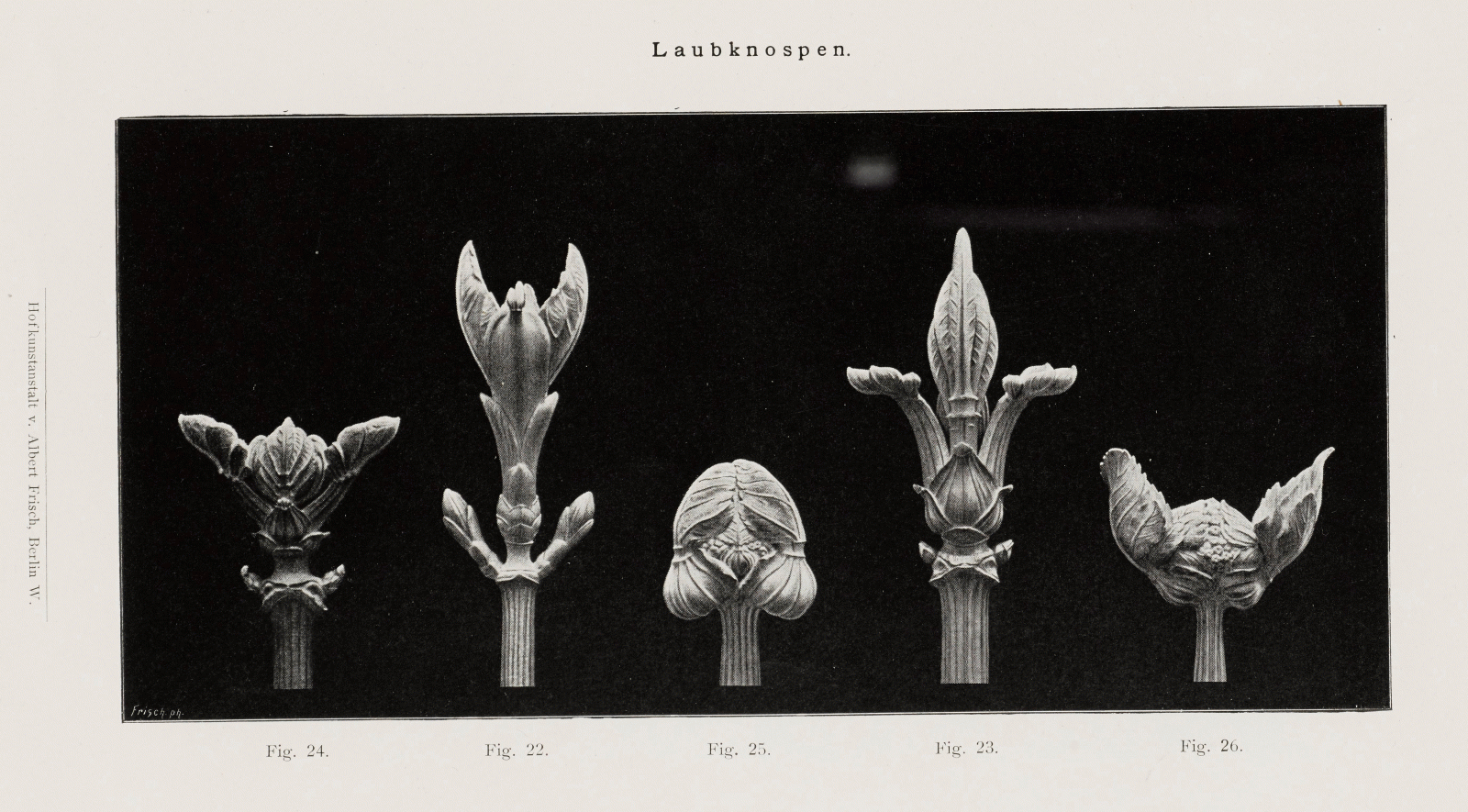Research
(Re)Producing Nature. Moritz Meurer’s Teaching Aid Collection for Applied Plant Studies
Angela Nikolai
The project deals with the entry of life and specifically the plant into the curriculum and media culture of arts and crafts apprenticeships around 1900. Against the background of the internationally required return to nature and an intensified examination of the laws of natural formation, the question arises as to vegetal diversity of appearance adapted and instrumentalized for pedagogical purposes: How did the ephemeral organic material meet the necessities of lasting teaching media, how was the plant integrated into the knowledge system of applied arts teaching, and, finally, how was it positioned as a new aesthetic paradigm?
This process should neither be seen as a smooth implementation of the required arts and crafts reform agenda nor in the sense of a linearized popularization of simplified botanical expert knowledge as implied by the notion of a scientification of the arts. Rather, it is important to visualize pragmatic, programmatic and structural obstacles, as well as the controversial negotiation process that plant studies triggered with regard to the educational system and prevailing aesthetic norms.
This process can be exemplified by Moritz Meurer's concept of an applied plant study and the teaching material collection created for it. This collection, developed between 1891 to 1910 in Rome and Berlin, included graphics, photographs, bronze and plaster casts, electrotypes as well as living, dried and preserved specimens, and was commissioned by the Prussian state and the school of the Kunstgewerbemuseum Berlin. The project examines this multimedia ensemble following material culture studies and the practice turn of the history of science by considering the formal, material, technical and semantic constitution of Meurer's artificial plants as well as the social network involved in their manufacture. The project thus not only provides the first comprehensive study of this teaching collection. It also seeks to promote research on object culture and visual education in the applied arts and challenges the general mainly functionalist reading of teaching media by instead stressing their decisive own aesthetic presence and value which considerably affect their didactic potential and visual evidence.
This project is part of the Research and Fellowship Program 4A Laboratory: Art Histories, Archaeologies, Anthropologies, Aesthetics, a cooperation between the Kunsthistorisches Institut in Florenz and the Stiftung Preußischer Kulturbesitz.

Karl Blossfeldt and Louis Heitsch, plaster casts of leaf buds, collotype by Albert Frisch, published in: Moritz Meurer, Catalog der plastischen Pflanzenformen. Eine Sammlung von Modellen nach der Natur in Relief- und Rundformen zum Gebrauche an technischen Kunstschulen, Dresden o.J. [1896], Museum-Naturalienkabinett Waldenburg i.S., photo: Die Kulturgutscanner


